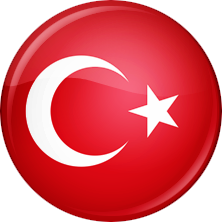Medical Ozone


Medical Ozone
The extension of quality lifespan and the pursuit of greater vitality and energy can be supported through various medical treatments, one of which is medical ozone therapy. Following ozone therapy administered through the bloodstream, there is an increase in the activity of the antioxidant system (strengthening the immune system), an acceleration of metabolism, regeneration of cartilage tissue, increased energy, activation of collagen tissue, regeneration of blood vessel walls, and consequently, the activation of the body's self-renewal mechanism.
Therapeutic Use of Ozone
Medical ozone is always used in the form of a mixture of pure ozone and pure oxygen. Depending on the application, the ozone concentration varies between 1 and 100 µg/ml (0.05 - 5% O3). The ozone therapist, a doctor trained in ozone therapy, determines the complete dose the patient will receive based on the patient's condition and medical indications.
Characteristics and Effects
Due to its well-known bactericidal (bacteria-killing), fungicidal (fungus-killing), and virostatic (virus replication-inhibiting) properties, medical ozone is used in disinfecting infected wounds and in the treatment of diseases caused by bacteria and viruses.
Its ability to increase blood circulation is used in the treatment of circulatory disorders and makes ozone highly valuable in revitalizing organic functions.
When used in low doses, it boosts the body's resistance, in other words, it activates the immune system.
In response to this activation caused by ozone, the body's immune cells produce special messengers called cytokines (containing important mediators like interferons or interleukins). These messengers create positive changes throughout the entire immune system that is stimulated to resist diseases. This, in turn, leads to particularly successful results when medical ozone is applied, especially in cases where the immune system is weak or compromised.
Ozone therapy administered in small amounts, known as Major Autohemotherapy, ultimately activates the body's own antioxidants and enzymes that eliminate free radicals. This explains why ozone is used in chronic inflammatory diseases.
Indications
- Thanks to its selective properties, medical ozone is used in four main areas:
- Treatment of circulatory disorders and geriatrics.
- Treatment of diseases caused by viruses, for example, liver diseases like hepatitis and cold sores (herpes).
- In difficult-to-heal infected wounds and inflammatory diseases, for example:
- Open wounds on the legs (ulcus cruris).
- Inflammatory bowel diseases (colitis, proctitis).
- Burns, scalds, and infected wounds, fungal infections.
- In cancer treatment, ozone is used in low doses as an immune system enhancer, either in the form of "major autohemotherapy" or "minor autohemotherapy," as an additional or complementary therapy.
Methods of Application
WARNING: Inhaling ozone gas can irritate the lungs and is therefore not recommended.
Based on years of experience and recent clinical studies, the validity of five application methods has been established:
Major Autohemotherapy: Treatment involves drawing blood from the patient. It is used for revitalization in geriatrics (age-related diseases), circulation disorders, viral diseases, and general immune system activation.
With this method, 50 to 100 ml of the patient's blood is drawn, mixed with a precisely determined amount of ozone, and then returned to the patient (using sterile ozone-resistant disposable materials and a vacuum bottle). Ozone reacts entirely with specific substances that make up red and white blood cells, thus increasing their vital activities and metabolism. This activated blood (not ozone or oxygen!) is immediately returned to the patient using a standard intravenous drip.
Minor Autohemotherapy: Following the same principle, the method known as minor autohemotherapy involves injecting 3-5 ml of ozonated blood intramuscularly into the patient. This method achieves nonspecific immune system activation and is used for allergic diseases and overall immune system enhancement.
External Treatment: Ozone gas is administered in a closed system, circulating within a special plastic bag (for the feet and legs) or in various areas of the body using suitable bags or foils. These disposable materials are made from ozone-resistant materials. The part of the body to be treated should be moistened with water beforehand, as ozone does not work effectively on dry areas. This method is highly effective for treating ulcers, wounds, open sores, post-operative lesions, shingles (herpes), and infected areas. Other methods include ozonated distilled water (used in dental treatments) and ozonated medical-grade olive oil (for skin conditions such as eczema, fungi, lichen, etc.).
Rectal or Vaginal Ozone Application: Although rectal application of O3 gas may not sound pleasant, it is far less discomforting than it seems (medically known as rectal insufflation). In fact, patients usually don't feel any discomfort because O3 gas is directly absorbed through the delicate intestinal membrane. Moreover, the tubes and bags are single-use, ensuring complete hygiene, and patients can apply this themselves. This method is generally indicated for inflammatory bowel diseases but has also been used for overall health and revitalization due to its less invasive nature.
Intra-Articular Ozone Injection: As the name implies, ozone gas is slowly injected into the joint (intra-articular) by trained individuals. This method is used for painful inflammatory joint diseases (arthritis, recurrent arthrosis, and general stiffness).



